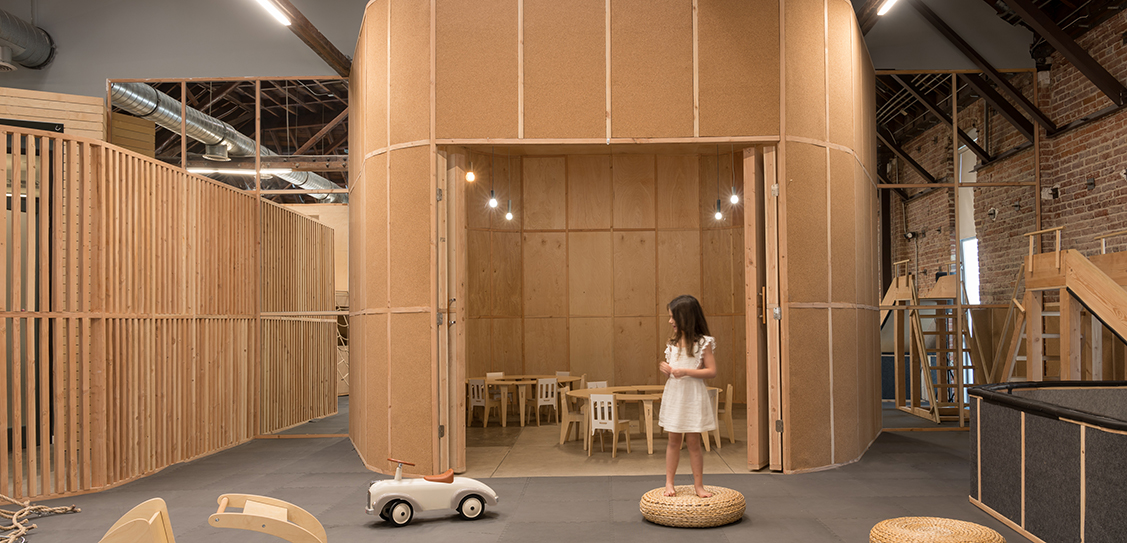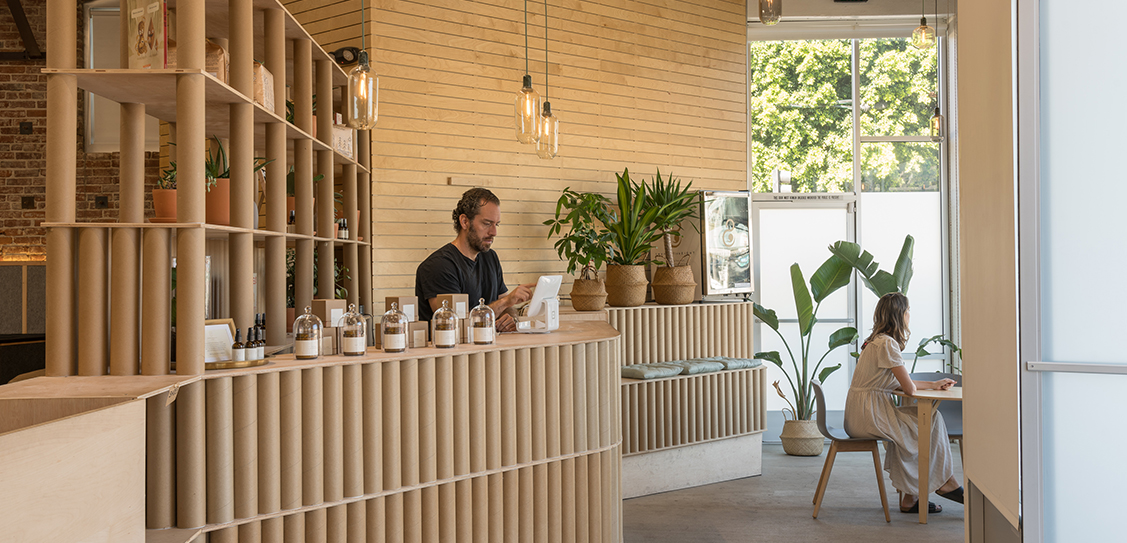The project was created according to two rules, the first was to generate two different spaces acoustically isolated one from each other, for the adults and children, and with the second one, to create in both spaces, open squares, by compressing the private uses in volumes that are ordered around these squares.
Besides the trusses, the building has a few closed volumes in different heights that contain maintenance functions as well as the actual bathrooms, kitchen and meeting rooms.
In a functional level, two cubes were built inside the childrens’ area, Tree House y Ball pit, then two cubes inside the adult zone, Bike Cube y Silence Cube, and one cube in between the two areas connected to the children area. Every cube is connected through high baseboards or curves made of wooden slats.
A wall was built, splitting the building up into two parts; the wall contains the acoustic isolation and is covered by mirrors in order to generate more amplitude in both spaces. The division is generated by a constructive module that is repeated in the form of bands.
These bands materialise in different materials according to their use or function and even become lattices when one is interested in having a visual communication between spaces. Wood contributes as a structural element and generates quality in the majority of the furniture. The mirror in the central wall amplifies the children and adult spaces; the cork and felt are used as an exterior skin in cubes and baseboards; lastly, the cork is used in the counter and in the exhibition shelves are a way to organise and support.
Through its expansion and compression the entire perimeter is covered. This spatial tension creates interior spaces that respond to the requested programme, and at the same time, creating the facade of the square that will be the main space for children or to develop the space into various activities for students.


